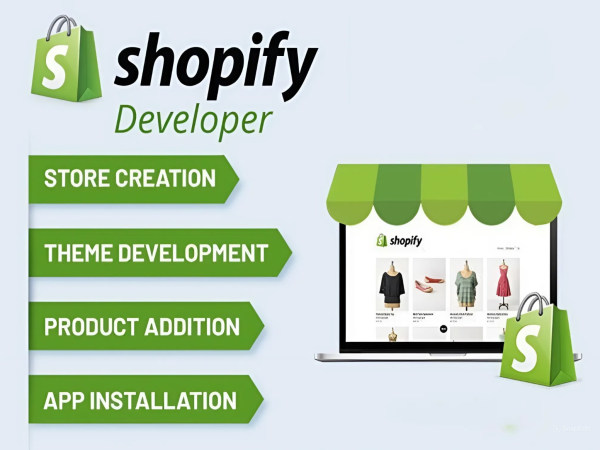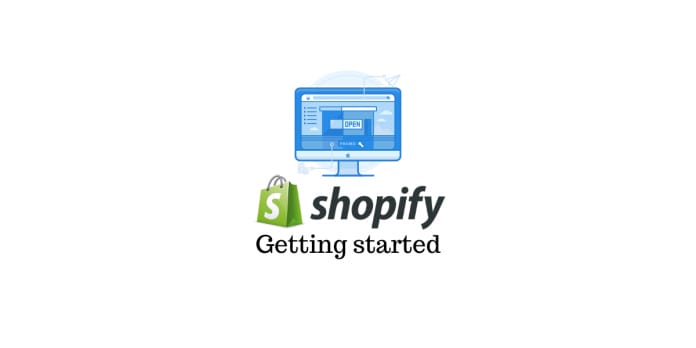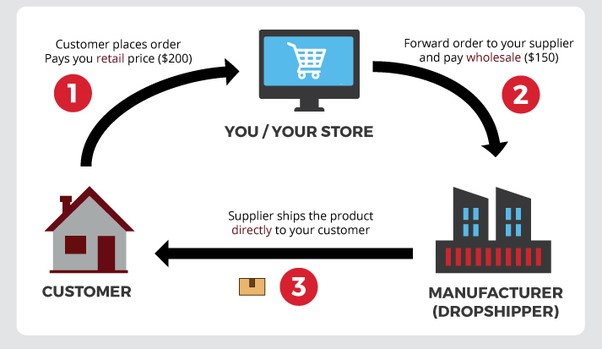
“Getting Started with Shopify to Earn Dollars Online: A Comprehensive Guide for New Entrepreneurs”
Discovering Shopify

If you’re looking to start an online store with minimal hassle, Shopify might just be the e-commerce platform you need. Launched in 2006 by Tobias Lütke and Scott Lake, Shopify was created out of their experience with Snowdevil, a snowboarding equipment store that struggled with existing e-commerce solutions. Lütke, a German-Canadian developer, was frustrated with the tech available, so he decided to build something better. Using Ruby on Rails, he developed Snowdevil, which eventually led to the launch of Shopify. Shopify also introduced Liquid, a template language written in Ruby, to help users customize their online stores.
By 2009, Shopify had expanded its capabilities with an API platform and an App Store, allowing developers to create and sell applications for Shopify stores. Today, Shopify helps you set up a modern online store and manage sales through various channels, including marketplaces, social media, and even in-person with its POS system.
How Does Shopify Work?

Shopify is essentially a subscription-based Software-as-a-Service (SaaS) platform. You can choose from several Shopify pricing plans, starting at around ₹1,994 per month. These plans provide a fully branded online store and a range of tools for selling both online and offline. If you’re just starting out, the “Starter” plan is available for just $1 per month. This plan doesn’t include a full online store but gives you mobile POS sales and a Buy Button for integration with other websites and blogs.
Each plan comes with essential features for running your business—think product sourcing, sales tracking, inventory management, and payment processing. Plus, you can extend functionality with hundreds of Shopify apps available in the Shopify App Store.
Getting Started with Shopify

- Try It Free for 14 Days: Begin with a free trial to explore Shopify’s features and see if it’s the right fit for you.
- Set Up Your Sales Channels: Use the setup wizard to connect your sales channels. You can always modify or add more channels as you grow your store.
- Add Your Products: Whether you’re selling your own creations or using Shopify dropshipping, you can build a diverse inventory to attract customers.
- Set Up Payments: Activate Shopify Payments with a single click, or connect a third-party payment processor. Shopify supports over 100 external processors.
- Configure Shipping and Taxes: In the settings tab, set up your shipping methods, rates, and sales tax information to keep everything organized.
- Customize Your Store: If you want a branded website, Shopify offers easy-to-use Shopify themes that you can set up and personalize to reflect your brand.
- Process and Track Orders: Once your store is live, manage orders and track shipments directly from your Shopify dashboard. Shopify automates updates and tracking info for your customers.
- Launch and Sell: With everything set, start selling through social media, marketplaces, and in-person with the POS system.
Shopify Pricing in 2023

Shopify’s pricing includes a monthly subscription fee, plus costs for payment processing, shipping labels, and advanced POS features. Here’s a breakdown of the main plans:
- Starter Plan: $1 per month for the first three months. This plan offers basic order management and performance metrics, ideal for new entrepreneurs.
- Basic Plan: $25 per month. This plan includes store creation, product shipping, payment processing, and up to 1,000 inventory locations. It also includes basic reports and 2 staff accounts.
- Shopify Plan: $65 per month. Suitable for growing businesses, this plan offers professional reporting, up to 1,000 inventory locations, and 5 staff accounts.
- Advanced Plan: $399 per month. Designed for larger businesses, this plan includes custom reporting, up to 1,000 inventory locations, and 15 staff accounts.
Shopify also offers discounts for annual and biennial payments.
Payment Processing and Fees

You can use Shopify Payments or connect your own payment processor. If you choose a third-party processor, Shopify will add a transaction fee of 0.5% to 2% per sale. Using Shopify Payments eliminates these extra fees. Shopify Payments also supports in-person sales via their mobile POS app and retail POS system.
Shipping Costs

With Shopify, you can print shipping labels right from your dashboard and enjoy discounted rates with carriers like USPS, UPS, DHL, and more. Discounts increase with higher-tier plans, helping you save on shipping costs.
Additional Plans and Features

Shopify’s POS system supports in-person sales across various settings, from food trucks to pop-up shops. You can use the free POS Lite version or opt for full retail functionality with a monthly fee. Shopify also offers premium themes and a broad selection of apps to enhance your store’s look and functionality.
Products You Can Sell on Shopify

Shopify supports a wide range of products and services, including physical items, digital downloads, memberships, tickets, rentals, and more. Plus, Shopify integrates with various international marketplaces to help you expand your reach.
Shopify’s Strengths and Limitations
Pros:

- User-Friendly: Ideal for beginners looking to set up and manage a store quickly.
- Affordable Entry: Low-cost plans make it accessible for startups.
- Secure: Shopify handles all technical aspects, so you can focus on your business.
- Integrated Sales Channels: Seamless integration for both online and in-person sales.
- Built-in Features: Includes product sourcing and automated email marketing tools.
- Scalable: Supports both small businesses and large enterprises.
Cons:

- Cost: Alternatives might be more budget-friendly for those just starting out.
- Transaction Fees: Extra fees apply if not using Shopify Payments.
- Limited Theme Customization: Advanced features may require additional coding.
- Basic SEO and Blogging Tools: Compared to platforms like WordPress.
Conclusion
Shopify stands out for its ease of use, extensive sales channels, and scalability. While it has some limitations in blogging and SEO, its robust functionality and business management tools make it a top choice for many entrepreneurs. For simplicity, growth potential, and a wide sales reach, Shopify is definitely worth considering.
Good luck with your Shopify journey!




